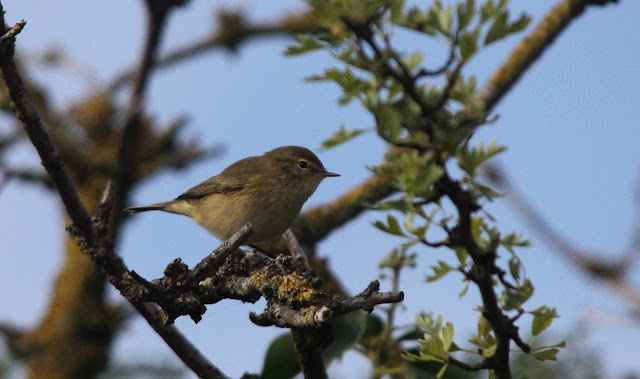Pages
- Blog
- Site list
- 2024 Site List
- 2023 Site List
- 2022 Site List
- 2021 Site List
- 2020 Site List
- 2019 Site List
- 2018 site list
- 2017 site list
- 2016 site list
- 2015 site list
- 2014 Site list
- 2013 site list
- 2012 site list
- 2011 Site list
- Exotica
- Breeding Bird Survey 2015
- Bird Reports
- Earliest and Latest dates for Common Migrants
- Patch Map
- Contributors
- Contact
- Firecrest
- Iconic birds: Skylark
- Kingfisher
- Stu's sounds of Wanstead
- Epping Forest: Its birds. Edward North Buxton (192...
- Butterflies and bugs
7 September 2015
Autumn migration 2015, week 5; August 30–September 6
Have we peeked too early? It seems like everything we might expect has come and gone. Redstart and Whinchat numbers declined throughout the week, only the Spotted Flycatchers remained constant. The Wryneck only lasted three days–poor in comparison with what its predecessors had managed, but had it been there since Saturday? Maybe! I heard an alarm call while staking out the Redstart in the enclosure on Saturday, which sounded quite woopeckery, and quite like nothing I had heard before. I checked xeno canto for Wryneck alarm calls–handily there were examples and a near match, or that could be the mind influenced immediately by the recording replacing what you did hear with what you want to hear. A rumour has it that someone had a sighting on the Sunday, but the accolade of finder goes to Mick Orme, visiting from North London in the hope of seeing Pied Flycatcher having dipped them on the Saturday.
That was our fourth bird in six years and probably the most un-cooperative one of the lot, but perhaps we are expecting too much after a record month for migrants. With most of the lingerers gone their place is now being taken by Goldcrest and an invasion of Siskin. What's going on there then? Earlier this year I relayed news that Siskin had stayed put during the winter as a result of a bumper spruce cone harvest, and this could be why we are getting birds now. A population explosion or the depletion of this food source, or both. It is nice to here their sad calls again, but I am not sure it makes up for the lack of Redstart, Pied Fly and now Common Whitethroat that also appear to have hoofed it.
This week the wind is changing again, turning to a more easterly direction–so certainly good for eastern coastal sites and some stuff might get through to us. A Barred Warbler would be nice (congratulations to Lee Dingain for his find at Staines and Gary James for his Gallions Reach bird) if only to compensate for the "not proven" tag given to our last one by the London Records Committee–I am having it anyway it was soo a Barred! We tried to pluck something out of obscurity this week in the form of a strange lark, with very little in the tail department that refused to call and due to its lack of tail looked very interesting. Crap views in crap weather had us (OK me) of Bimaculated Lark (that would suffice!), but it finally called after the umpteenth boot... eugh!
If nothing good turns up over the next few days it could be a long wait for the ouzels...
Subscribe to:
Post Comments (Atom)






No comments:
Post a Comment